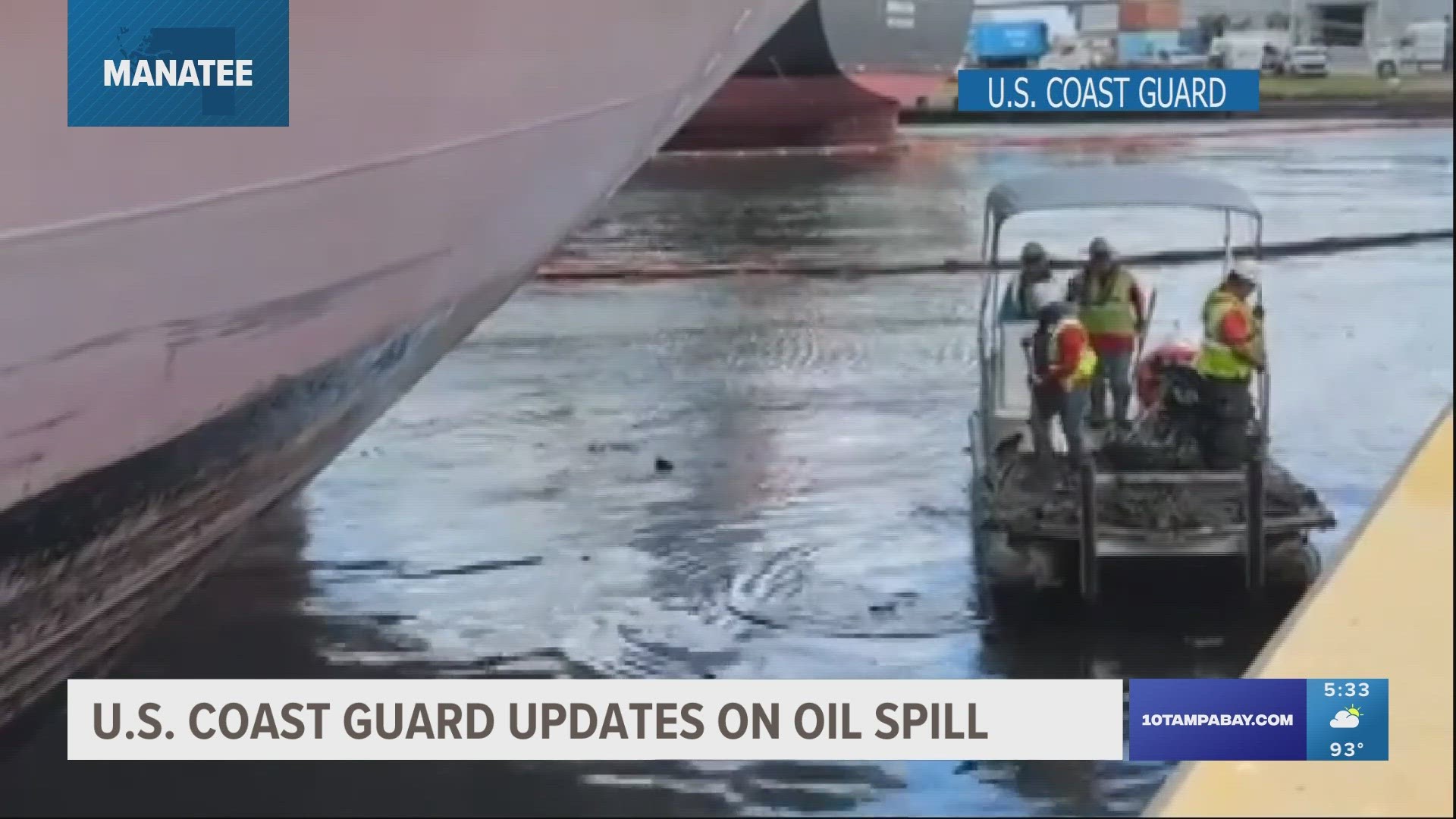MANATEE COUNTY, Fla. — The U.S. Coast Guard could be close to finding who or what caused the oil spill at Port Manatee, but definitive answers from the investigation and a named responsible party could still be weeks away.
The incident led to a shake-up in Port Authority leadership during a Manatee County Commission meeting on Tuesday.
Tensions boiled over as commissioners discussed the oil spill and concerns about how it had been handled. In a surprise move, commissioners voted to remove Commissioner George Kruse as chairman of the Port Authority after they blamed him for not reacting or communicating fast enough once they spotted the oil spill.
The board then elected Commissioner James Satcher to replace Kruse.
Both Kruse and the Director of Seaport Manatee, Carlos Buqueras, explained that the U.S Coast Guard was the lead investigator with jurisdiction over the port under the circumstances and was directly handling the communication about the spill until it was determined the Port should make a statement and hold a subsequent press conference.
Buqueras said the clean-up of the oil spill discovered on Aug. 31 is 99% complete and they have removed 20,500 gallons of oil-water mixture.
Also, for the first time in the 13 days since the investigation began, Coast Guard officials gave insight into who or what is among those they're looking at in terms of locating the source of the spill.
"Potential sources are on the two foreign free vessels that were there. The Canelo Arrow, The Sea Star Victory, the Quantico Creek, and then the two facilities we took samples from would be FPL and TransMontaigne," Eric Garza, chief warrant officer with the U.S. Coast Guard, said.
Garza stressed that no one had yet been identified as the source of the spill.
While they've completed stress and pressure tests on various infrastructure and lines to determine if there were any leaks, investigators said they are leaning on the 26 oil samples they've taken which is equivalent to a "DNA" test, to reveal the source.
"I took a sample from the water and then I took a sample from the boats and the facilities and I will see which one matches the sample I have from the water," Garza said.
When asked by the commission chair, Garza said he did not have a timeline for concluding the investigation and identifying a source because of the process involved. He said it takes three to five days to process up to three samples coupled with other logistical matters.
"Our sample office is in Connecticut — New London, Connecticut. We have to get all the samples and process them as evidence, there's a chain of custody. They have to be packaged in an appropriate way to be shipped because it's considered dangerous cargo and flammable. I am shipping oil," he said.
According to Garza, the clean-up has cost $825,000 in government funds from the Oil Spill Liability Trust Fund which would be passed on to the responsible party.
"We'll get that money back so when it's based on those samples, there's definitely a sense of urgency. I can't speed it up, I'm not the chemist who's processing those samples but once we get those results in, it'll be a different story," he added.
County leaders also asked if the design of the port and recent weather could have played a role.
"It is a natural collection point so debris often blows in that area because with that oil there's trash, a lot of trash a lot of seagrass. We just went through Hurricane Idalia and a king tide....it could be the case very well," Garza said.
Port Managers said additional actions to correct any problems revealed would follow including taking appropriate legal action against the company or companies that caused this spill once identified. The port's sea walls are yet to be cleaned, after which the Coast Guard will give the all-clear for full operations to resume at the port, according to Buqueras.

